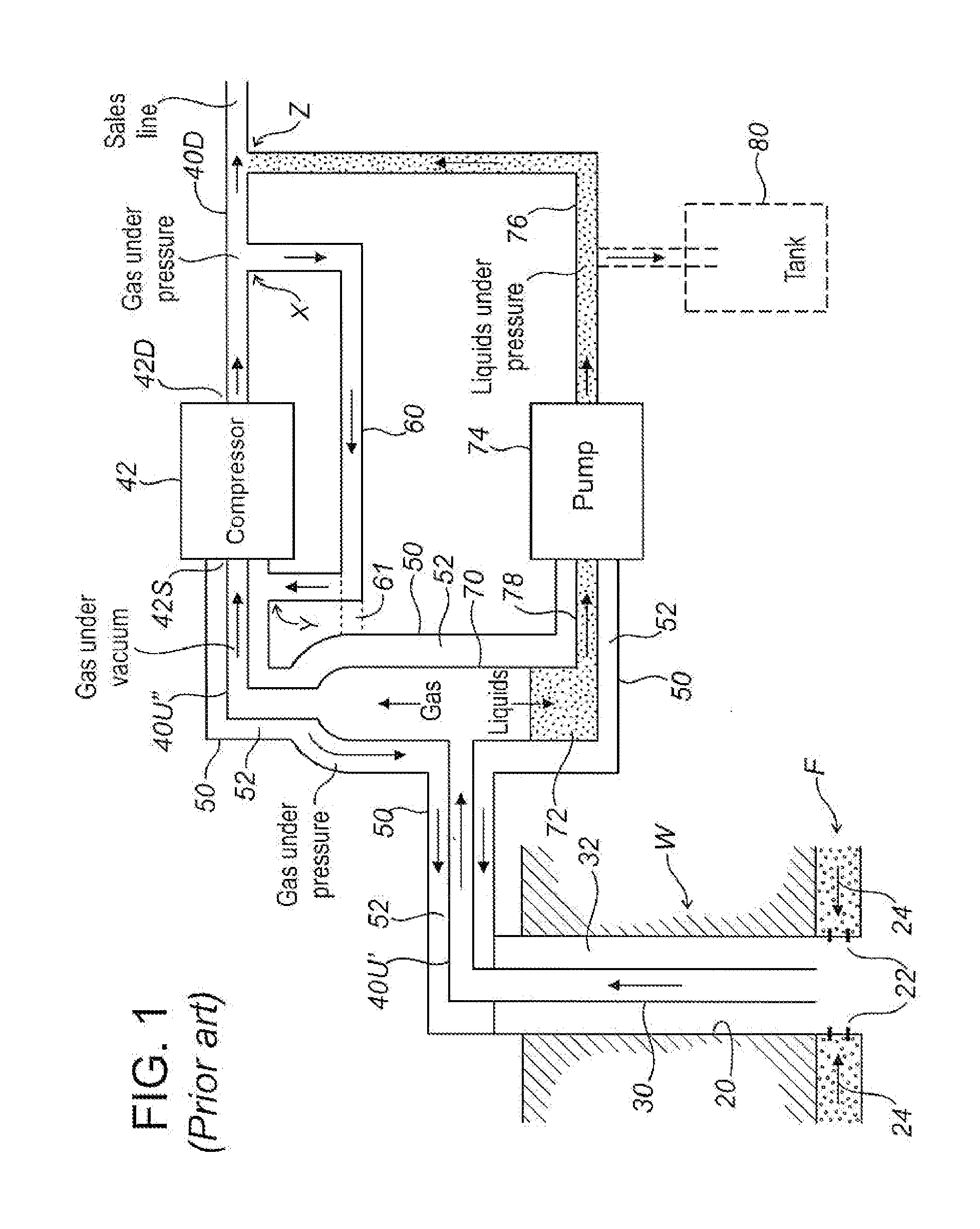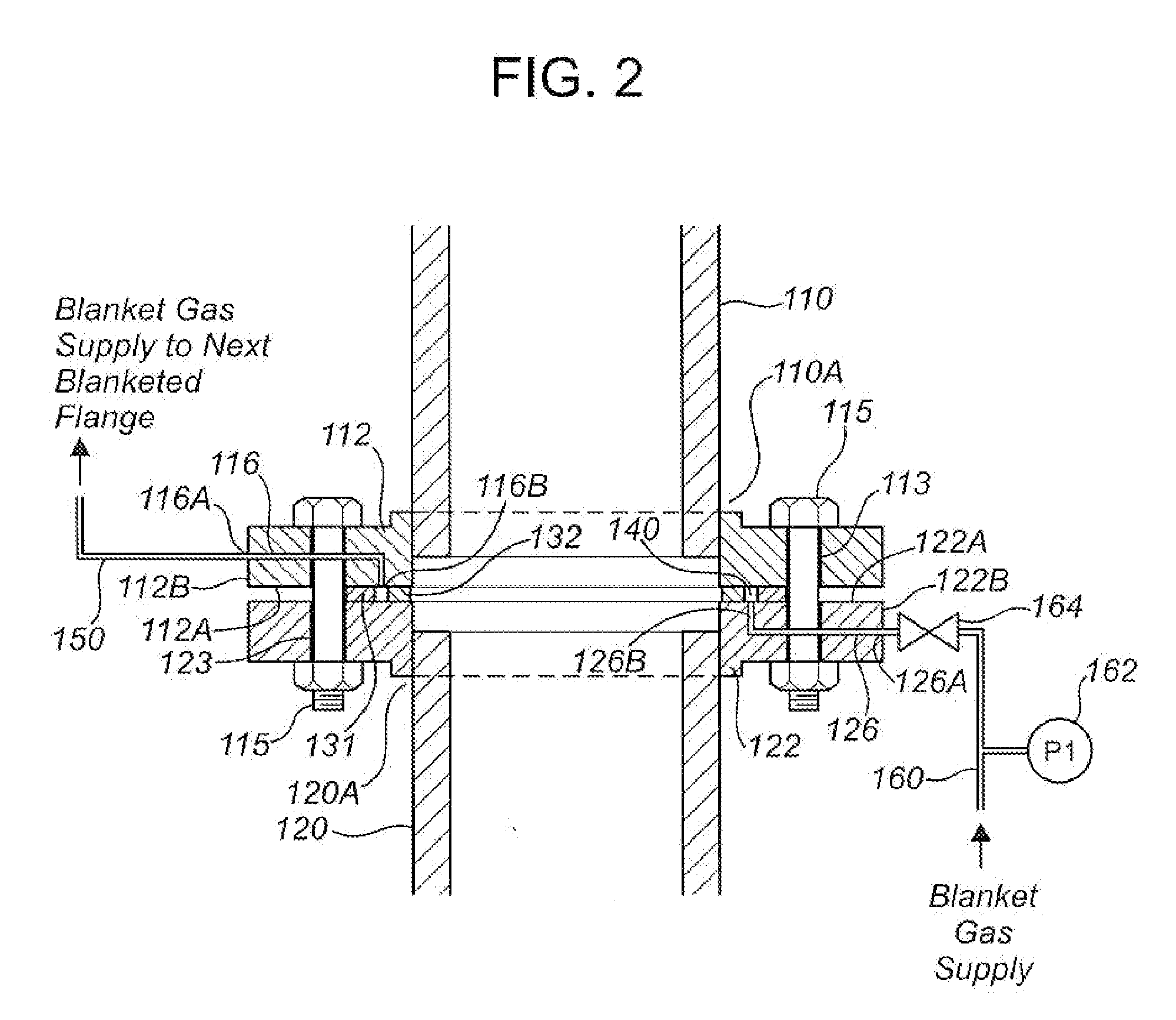Gas-blanketed piping connections
a technology of gas-blank piping and piping connections, which is applied in the direction of sealing/packing, mechanical equipment, and well accessories, etc., can solve the problems of affecting the service life of the pipeline, the risk of explosion, and the negative pressure of the pipeline, so as to achieve the effect of beneficial and advantageous
- Summary
- Abstract
- Description
- Claims
- Application Information
AI Technical Summary
Benefits of technology
Problems solved by technology
Method used
Image
Examples
Embodiment Construction
[0032]The present invention will be best understood after first reviewing methods and apparatus taught by CA 2,536,496 and U.S. Pat. No. 7,275,599 for protecting against air influx into piping and equipment components conveying or containing gas under negative pressure. FIG. 1 (which is not to scale) schematically illustrates a typical natural gas well W penetrating a subsurface formation F containing natural gas. Well W is lined with a casing 20 which has a number of perforations conceptually illustrated by short lines 22 within a production zone (generally corresponding to the portion of the well penetrating the formation F). As conceptually indicated by arrows 24, formation fluids including gas, oil, and water may flow into the well through the perforations 22. A string of tubing 30 extends inside the casing 20, terminating at a point within the production zone. The bottom end of the tubing 30 is open such that fluids in the wellbore may freely enter the tubing 30. An annulus 32 ...
PUM
 Login to View More
Login to View More Abstract
Description
Claims
Application Information
 Login to View More
Login to View More - R&D
- Intellectual Property
- Life Sciences
- Materials
- Tech Scout
- Unparalleled Data Quality
- Higher Quality Content
- 60% Fewer Hallucinations
Browse by: Latest US Patents, China's latest patents, Technical Efficacy Thesaurus, Application Domain, Technology Topic, Popular Technical Reports.
© 2025 PatSnap. All rights reserved.Legal|Privacy policy|Modern Slavery Act Transparency Statement|Sitemap|About US| Contact US: help@patsnap.com



